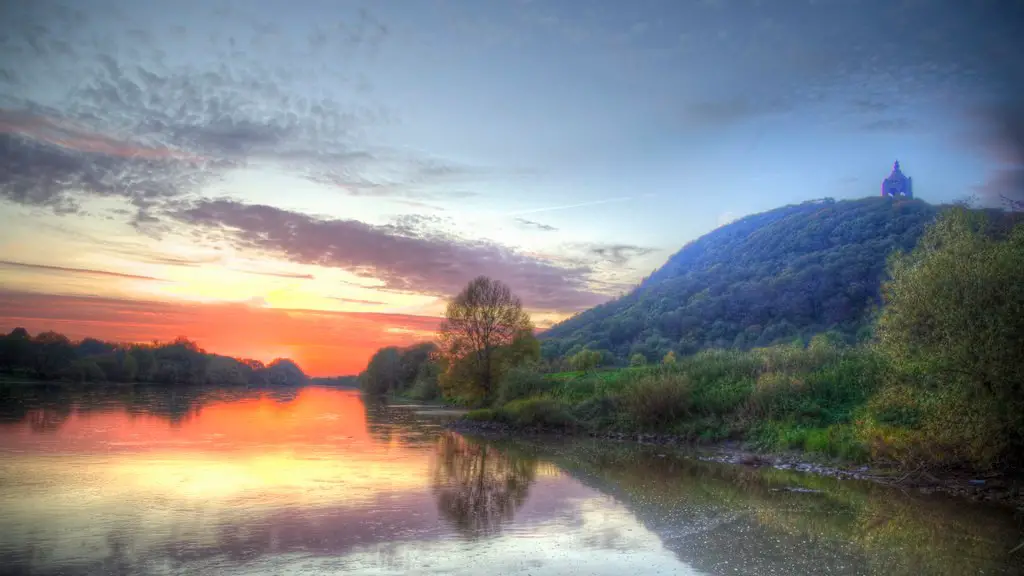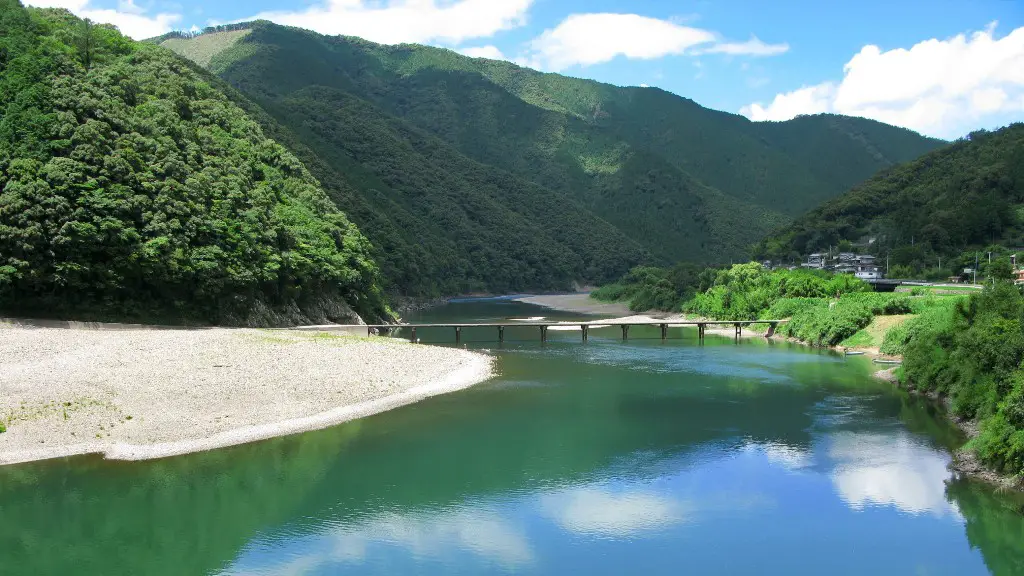Background:
The Mississippi River is the second-longest river in the United States and is an important part of the world’s economy and culture. It is a trans-boundary river that runs from Lake Itasca in northern Minnesota, USA to the Gulf of Mexico. Its total length is estimated to be slightly less than 2,320 miles (3,740 km) with an average water discharge of about 175,000 cubic feet (5,000 m³) per second.
The Mississippi River has been the lifeline of vast areas of the United States since its discovery and settlement in the early 16th century. It has been used extensively among its people as a source of food, transportation, and energy. In addition, the river is thought to have played a major role in the history of the country and still serves as a main source of sustenance and recreation.
The Mississippi has been declared one of the top ten most endangered rivers in the world due to its species diversity and pollution have diminished in recent years. Conservation efforts have been established by various organizations, governments and individuals to protect this vital waterway and prevent further damage.
Source:
The source of the Mississippi River is located in northern Minnesota, specifically at Lake Itasca. This lake is about 2.7 square miles (7.1 km2) in size and is situated in the Itasca State Park. This area of the river is considered to be where it is born and is sometimes referred to as the “headwaters”. From here, the river flows south and eventually empties into the Gulf of Mexico.
The headwaters are beautiful and host all sorts of wildlife and fish. The barren landscapes and dense forests make for a great spot for paddling and fishing, and visitors to the park often find it quite enjoyable. Besides the source of the Mississippi River, the park also hosts many other attractions, such as a historical museum, hiking trails and birdwatching.
Mouth:
The mouth of the Mississippi River is in the Gulf of Mexico, approximately 900 miles (1,444 km) from where it begins in northern Minnesota. When it enters the gulf, the water carries with it sediment that it has collected as it traveled towards the sea. This sediment contributes to the formation of a delta, which is an area of deposition that results in a region of marshy wetlands.
The delta of the Mississippi River is incredibly important in maintaining the health of the gulf. The nutrients, sediment and other materials that are deposited here create a habitat for a large range of wildlife, such as seabirds, fish and shrimp. Furthermore, it creates an area of filtration that helps prevent pollutants from being washed out into the ocean.
Economic and Cultural Impact:
The Mississippi River has been key in the development of the United States and its economy. The river has been utilized for transportation and provided a means for people to move goods and services from one area to another. Additionally, its fertile banks have resulted in agricultural success, which has been the lifeblood of many rural communities and towns.
On the cultural level, the Mississippi River has had significant influence. Numerous songs, literature and films have revolved around its many geographies, people and events throughout its history. Additionally, it is home to a variety of historic landmarks, such as the city of New Orleans, the site of the Louisiana Purchase and the birthplace of Blues music.
Population and Wildlife:
More than 50 million people live next to or near the banks of the Mississippi River, in the five states that it runs through. These populations rely on the river for their source of drinking water, irrigation and transportation. Wildlife, such as beavers, deer, otters and bald eagles, also rely on the river for their sustenance, as do a large amount of fish, such as the channel catfish, sturgeon and paddlefish.
The Mississippi River has been home to numerous species of wildlife in the past and is still an important waterway for the many migratory birds that utilize the river’s path during the spring and fall. These birds travel from the northern states of the United States, across the Mississippi and into their more permanent homes further south.
Environmental Damage:
The Mississippi River has suffered from a variety of environmental issues over the years, such as water pollution, excessive sedimentation and the destruction of its wetlands and banks due to agricultural practices and construction. In many areas, the river has become oversaturated with nitrates, phosphates and other pollutants that can cause an array of health and ecological problems. These chemicals can result in algal blooms and oxygen depletion, resulting in fish kills and other undesirable effects.
Additionally, destruction of the area’s wetlands and banks can have drastic effects on the health of the river, as these habitats serve as a filter that can keep the water clean. Instead of allowing sediments and chemicals to accumulate, a wetland can absorb and filter these items before they can cause any harm.
Conservation Efforts:
Fortunately, conservation efforts are being made to protect the Mississippi River. Organizations and governments are working to reduce pollution, restore wetlands and reintroduce native species to the river. Additionally, efforts are being made to limit the destruction of banks and provide science and education programs that focus on the importance of the river’s ecology.
Individuals can also make an impact by choosing to reduce their water consumption and reduce their contribution of chemicals and materials to the river. Furthermore, those living near the river can participate in the conservation effort by planting native species and avoiding activities that can artificially change the natural course of the river.
Recreation:
The Mississippi River is also a popular site for recreational activities, such as boating, fishing and other water sports. While there are some areas that are deemed unsafe for such activities, much of the river is still open for people to take advantage of. This has resulted in the emergence of a vibrant recreational scene on the Mississippi, with numerous marinas, fishing tournaments, floating restaurants, and many other establishments catering to those that partake in recreational activities.
In addition to providing a great source of leisure, the Mississippi River also serves as a symbol of optimism and perseverance for many. Images of the river flowing freely and supporting life have been used in literature and film to show how no matter what may try to hold us back, there is always a way for us to rise above and succeed in the end.
Crime and Violence:
The Mississippi River has also been the site of various acts of violence and crime over the years. This is due to the fact that it is a major transportation thoroughfare and has been used by drug smugglers, gangsters and other criminal groups to transport contraband from one end of the river to the other.
Despite the security concerns, individuals with experience navigating the Mississippi River and its treacherous waters are still able to utilize it for legitimate activities and those with enough skill can find employment on tug boats and barges. In addition, many of the communities surrounding the river have been able to capitalize on the tourism market and there has been a recent surge in river cruises and vacations along its path.
Improved Standards:
Due to the complexity and vastness of the Mississippi River, there has been a great focus on improving and enhancing its standards, particularly in the wake of global environmental changes. Various initiatives have been implemented, such as the Clean Water Act and other regulations, to reduce the amount of pollutants entering the river and ensure its safety for current and future generations.
In addition, government agencies and non-profits have been working to restore some of the habitats and ecosystems destroyed by unnatural means. These groups seek to restore vital wetlands and fisheries, reestablish native species and ensure that the river is able to remain vital and productive for to communities, businesses and individuals that rely on it.
Flooding and Drought:
Like many rivers, the Mississippi River faces the risk of catastrophic flooding, which can cause damage to its banks, nearby communities and wildlife habitats. These floods occur due to rapid snowmelts and heavy rains and serve as a reminder of the power of Mother Nature and her unpredictable forces. Similarly, droughts can quickly reverse the fortunes of the river, decreasing water levels and bringing about prolonged suffering for many of its populations that rely on it for sustenance.
Therefore, individuals and organizations must take steps to protect the river and those that it serves in order to ensure its future. Projects and initiatives must be undertaken to mitigate the effects of climate change, modify the sensitive ecosystems of the region and provide assistance to those affected by extreme weather events.





